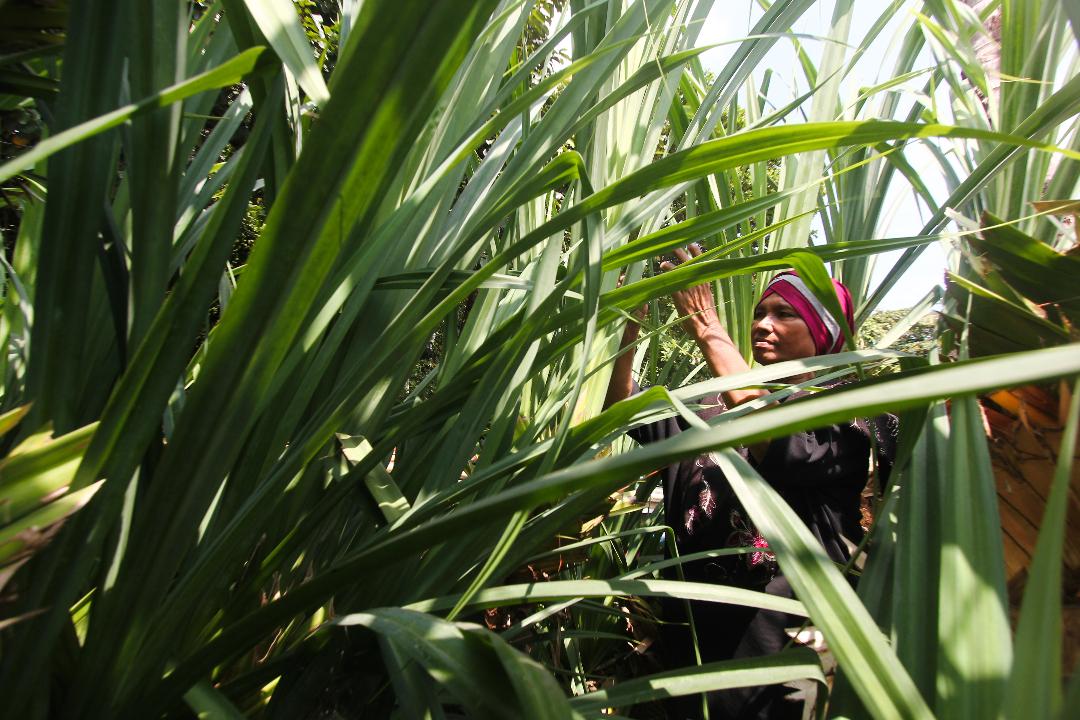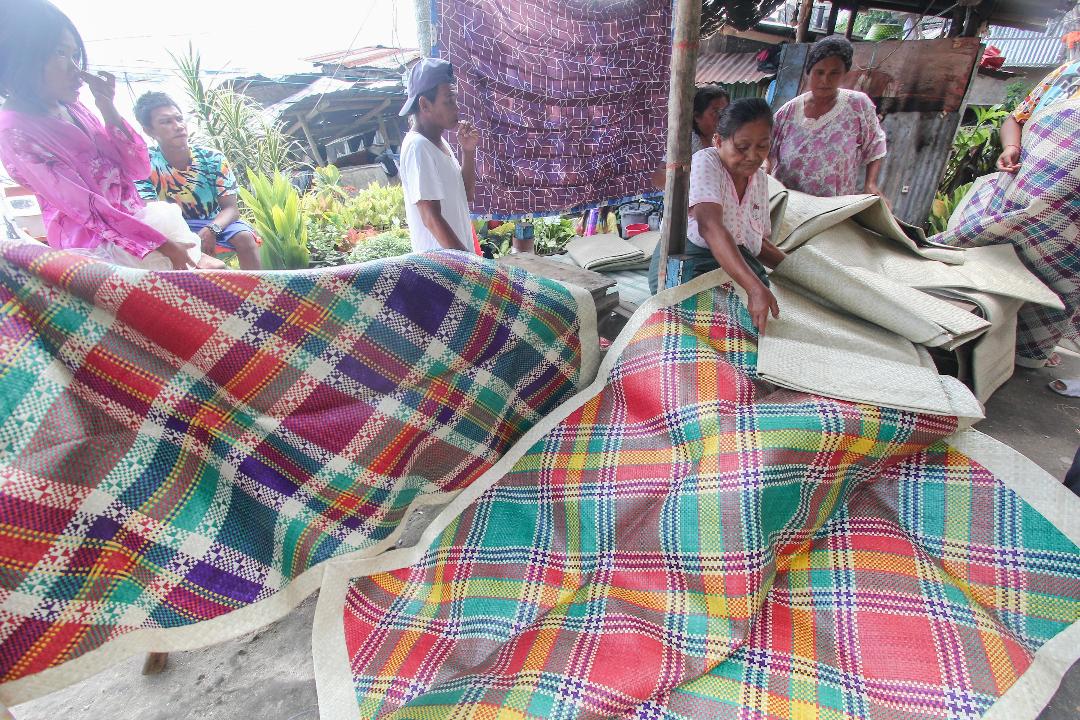Elderly women in Davao del Norte plead for help in marketing hand-women sleeping mats
TALICUD ISLAND, Davao del Norte – A group of elderly Moro women belonging to the Sama-Laminusa tribe is seeking assistance to market their traditional hand-woven sleeping mats.
LAPID Adlawan checks Romblon leaves in Talicud Island, Davao del Norte, the raw materials for weaving traditional sleeping mats and other handicraft products. (Keith Bacongco)
Due to absence of a market, the elderly women admitted that they struggle to pass on their weaving skills to younger generation.
Pindacong Sambo, the oldest weaver at 70, said that she and several other women in this island-community have been weaving sleeping mats for decades.
However, they lack access to the market, Sambo added.
Lapid Adlawan recalled there used to be some individuals who assist them in selling their products in Davao City.
“We have not heard from her anymore. There was also another one who came here and promised us to assist us in selling the sleeping mats in a mall in Davao but she did not come back here,” Lapid lamented. "Thus, we have at least 20 sleeping mats here that we have yet to dispose.”
The mat is made of Romblon leaves, a type of screw pine that belongs to Pandanus family, that grows in the coastal area of the island.
According to the women weavers, whom many of them are already widowed, it takes about a month for them to weave a 5x7 feet sleeping mat that costs P3,500 each.
MORO women belonging to sub-tribe Sama-Laminosa show their hand-woven traditional mats in Talicud Island, Davao del Norte. It takes them a month to weave the 5x7 sleeping mats made from Romblon leaves. (Keith Bacongco)
“It is a laborious process,” said Sambo, who learned the art of weaving since she was 15 years old from her ancestors in her hometown Jolo, Sulu.
“That is why it is sad that some people just want to buy our mats for just P500. They didn’t know tedious is the entire process,” another woman lamented.
Like Sambo, other women learned to weave the traditional sleeping mats when they were 12- to 15-years-old and still in Sulu.
However, they were forced to flee their homes due to conflict amid the declaration of Martial Law in 1972.
Adlawan recounted that it was their father, a fisherman, who came in the island first. “He is already here because they take a rest here in the island every time they were fishing in Davao Gulf.”
Situated south of Samal Island in Davao del Norte, Talicud is a home to at least 8,000 people. Its white sand beaches have become one the top tourist destinations in the region.
Access to market
Adlawan disclosed that the younger generation are not so interested in learning to weave because there’s no access to market. “Maybe, if we have the access to the market, many women and even the young ones will be interested to learn the art of weaving.”
Aside from economic reasons, she added that it is important to pass on their skills to the younger generation.
“Otherwise, this ancient weaving tradition will just vanish.”
Kim Saycon, business counselor of the Department of Trade Industry Negosyo Center in Samal Island, said that they have been providing market linkages to the weavers.
However, Saycon added that it has been a while since the weavers delivered their products at the display center in Peñaplata District.
“I will check again on our records but we will visit the community soon to check their products. But we will also coordinate with the LGU Samal since they are ones endorsing the products to our display center,” she said.

